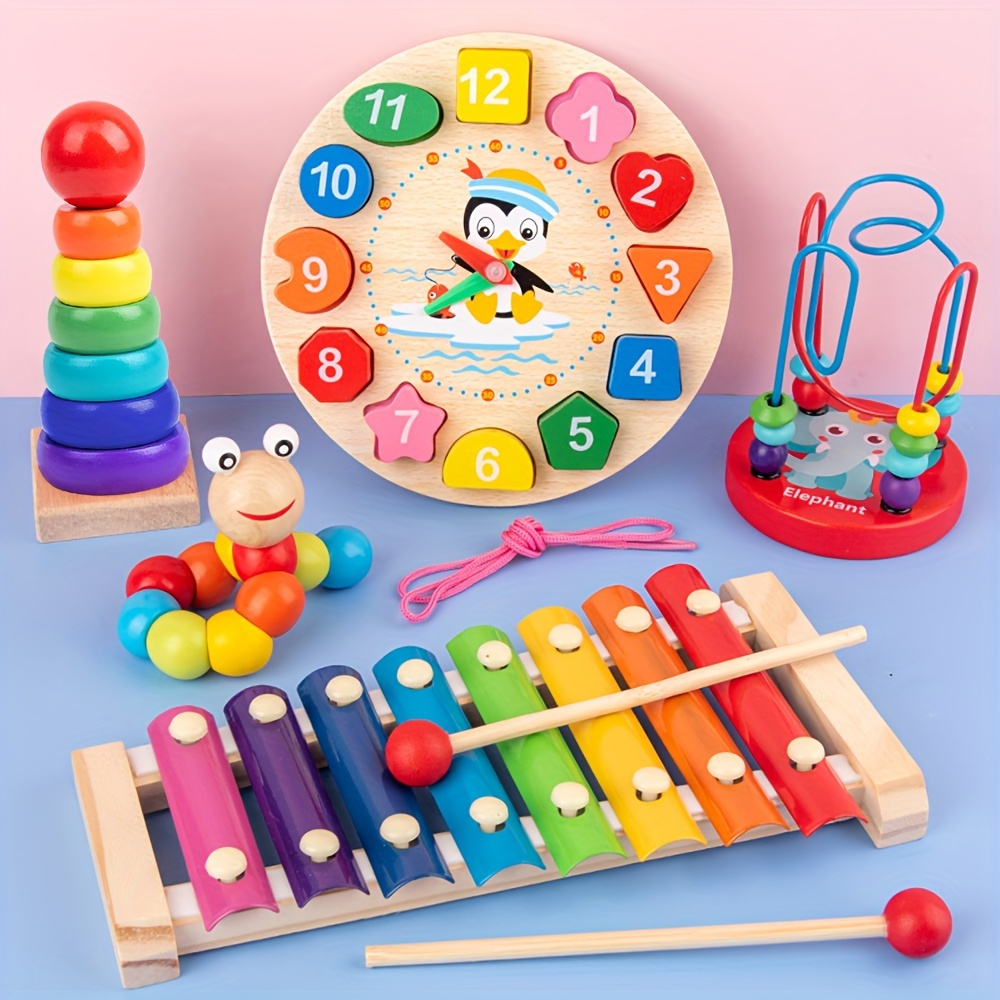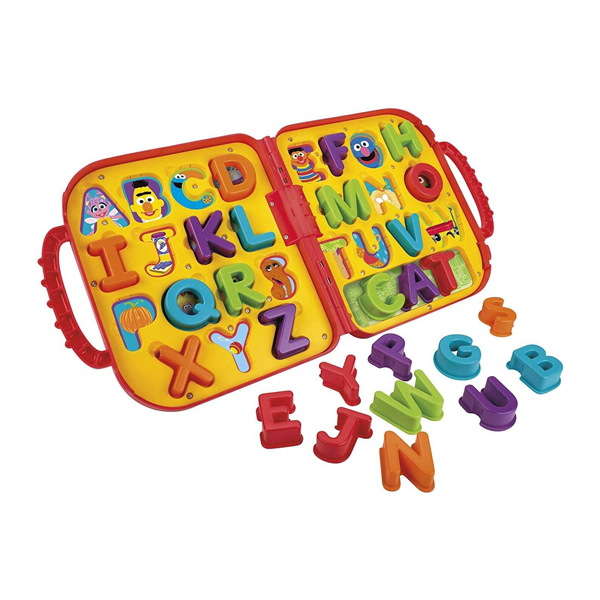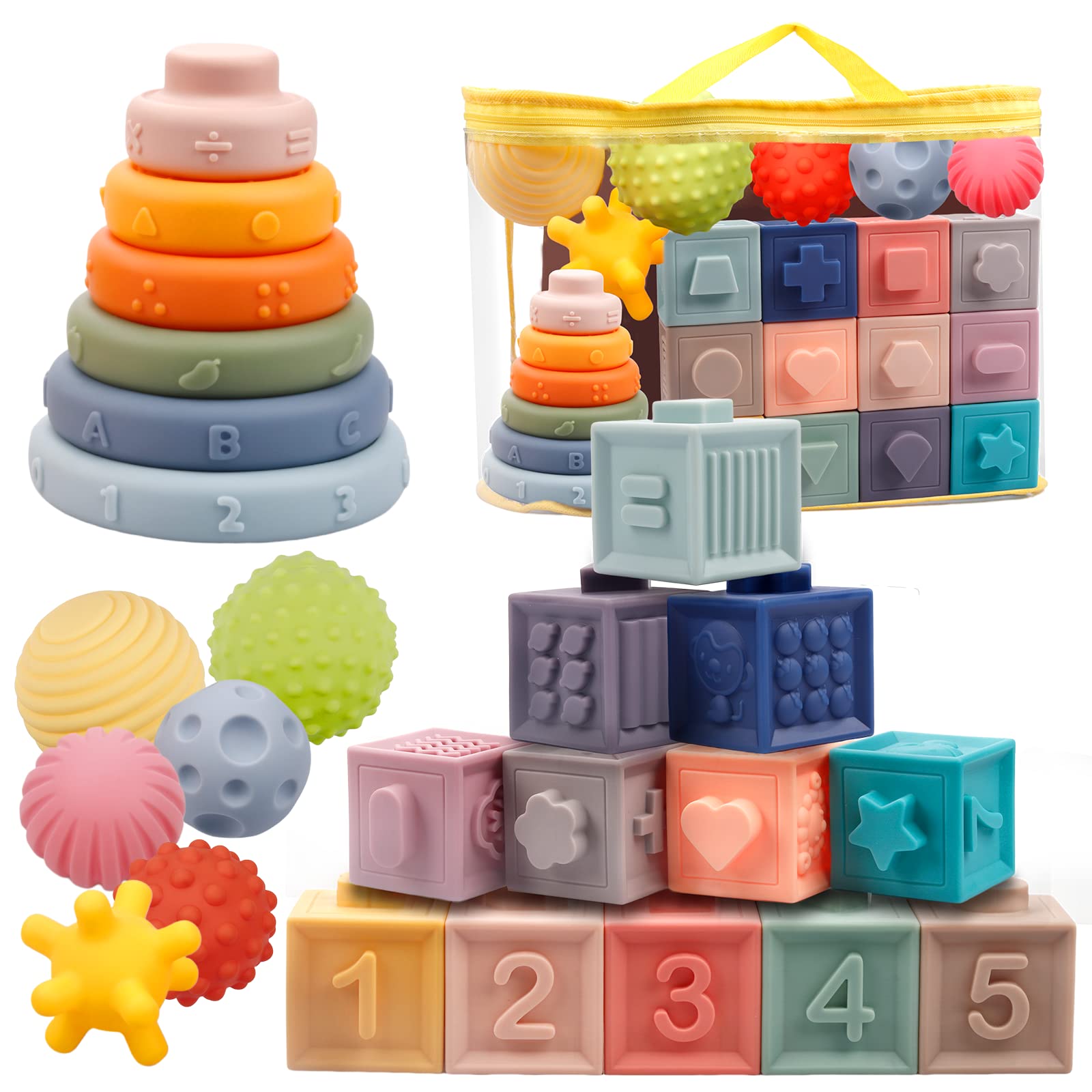Nurturing Young Minds: A Guide to Educational Toys for Babies
The first year of a baby’s life is a whirlwind of remarkable development. From gurgling newborns to curious explorers, their world expands rapidly. During this exciting time, play is not just fun, it’s essential. Choosing the right educational toys can spark a love for learning and support blossoming skills. This guide explores the wonderful world of educational toys for babies, providing insights into age-appropriate options and highlighting the benefits they offer.
Why Choose Educational Toys for Babies?
While all toys have a place in a baby’s world, educational toys are specifically designed to promote cognitive development, motor skills, and sensory exploration. Here’s why they’re a valuable addition to your baby’s playtime routine:
- Brainpower Boost: Educational toys can introduce basic concepts like shapes, colors, numbers, and letters in a fun and engaging way. This playful learning can stimulate cognitive development and lay the foundation for future learning.
- Motor Skill Marvels: Many educational toys encourage grasping, reaching, stacking, and manipulating objects. These actions strengthen fine and gross motor skills, crucial for future tasks like writing and dressing.
- Sensory Exploration: Educational toys often incorporate a variety of textures, sounds, and colors. This sensory stimulation plays a vital role in a baby’s development, helping them understand the world around them.
- Problem-Solving Prowess: Certain educational toys require simple problem-solving skills, like figuring out how to stack blocks or sort shapes. These playful challenges encourage critical thinking and lay the foundation for future problem-solving abilities.
Choosing the Right Educational Toys: A Matter of Age and Development
When selecting educational toys, it’s crucial to consider your baby’s age and developmental stage. Here’s a glimpse into some fantastic educational toys for different age groups:
Newborn to 3 Months:
- High-contrast mobiles: These mobiles with bold black and white patterns stimulate a newborn’s developing vision.
- Crinkly books: The crinkly sound and contrasting colors in these books engage a baby’s sense of touch and vision.
- Textured rattles: Rattles with various textures provide a delightful sensory experience for tiny hands.
4 to 7 Months:
- Stacking cups: These classic toys come in various sizes and materials, encouraging grasping, stacking, and hand-eye coordination.
- Activity gyms with playmats: With a variety of textures, dangling toys, and mirrors, activity gyms offer a stimulating space for exploration and developing gross motor skills.
- Soft activity books with different textures: These books engage a baby’s sense of touch and introduce basic cause-and-effect concepts.
8 to 12 Months:
- Shape sorters: These toys challenge problem-solving skills, hand-eye coordination, and introduce basic shapes.
- Busy boards: Busy boards with different latches, buttons, and zippers encourage exploration, fine motor skills, and object permanence.
- Board books with colorful illustrations: These sturdy books introduce the joy of reading and storytelling, while the colorful illustrations capture a baby’s attention.
12 to 18 Months:
- Push and pull toys: These toys encourage walking, balance, and coordination. Look for options with lights, sounds, or shapes to add an extra layer of learning.
- Nesting cups: Nesting cups come in different sizes and can be stacked or placed inside each other. They help refine motor skills, teach about size comparison, and encourage sorting.
- Simple musical instruments: Shakers, drums, and xylophones introduce young ones to the world of music and creativity. They also encourage hand-eye coordination and auditory processing.
18 to 24 Months:
- Sorting toys: Sorting toys come in various forms, from shapes and colors to textures and objects. They challenge problem-solving skills, promote hand-eye coordination, and introduce basic categorization skills.
- Picture matching games: Matching games with simple pictures of animals, objects, or shapes help with memory, concentration, and visual recognition skills.
- Building blocks: Blocks come in all shapes and sizes, and offer endless possibilities for creative building and imaginative play. They also promote spatial reasoning and fine motor skills.
2 to 3 Years:
- Simple puzzles: Puzzles with 2-4 pieces are a great introduction to problem-solving and spatial reasoning. Look for chunky puzzles with easy-to-grasp pieces that are perfect for little hands.
- Pretend play toys: Dress-up clothes, play food, and dollhouses encourage imaginative play and social interaction. They also help toddlers develop communication skills and explore different roles.
- Arts and crafts materials: Crayons, finger paints, and play dough allow toddlers to express themselves creatively and develop fine motor skills. These open-ended activities nurture their imagination and sense of exploration.
Remember, this is just a glimpse into the vast world of educational toys. There are countless options available to suit your baby’s unique interests and developmental needs. When choosing toys, consider the following:
- Safety: Always prioritize safety. Ensure toys are age-appropriate, free from choking hazards, and made from safe materials.
- Durability: Opt for well-made toys that can withstand frequent use and exploration.
- Engagement: Choose toys that capture your baby’s attention and encourage them to explore, interact, and learn.
Remember: This is not an exhaustive list, and it’s always a good idea to research individual toys to ensure they align with your baby’s interests and developmental stage.
Making the Most of Educational Toys: Tips for Playtime Success
Here are some tips to maximize the learning and enjoyment your baby gets from educational toys:
- Get Down to Their Level: Sit on the floor and play with your baby. Narrate your actions, ask questions, and encourage them to explore the toy with you.
- Focus on Interaction: Educational toys are not meant to be solitary activities. Use them as a springboard for interaction and engagement. Sing songs, read stories, and create scenarios that make learning fun.
- Keep it Short and Sweet: Babies have short attention spans. Play with educational toys for short bursts throughout the day, rather than long, forced sessions.
- Rotate the Toys: Having a variety of educational toys to choose from prevents boredom and keeps playtime engaging. Rotate the toys every few days to introduce new challenges and learning opportunities.
- Let Curiosity Lead the Way: Follow your baby’s lead and allow them to explore the toys in their own way. The most important thing is that they’re having fun and engaged.
By following these tips and choosing educational toys that match your baby’s developmental stage, you can create a stimulating and enriching playtime environment that fosters a lifelong love for learning.
